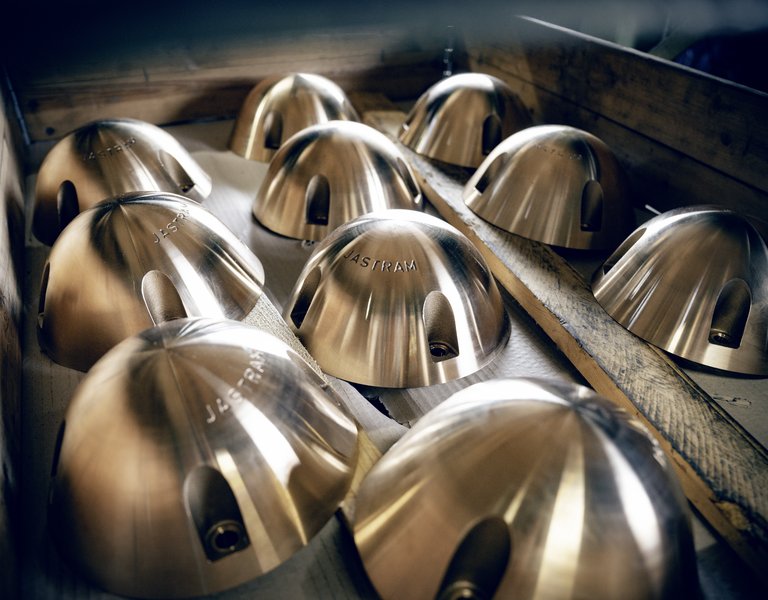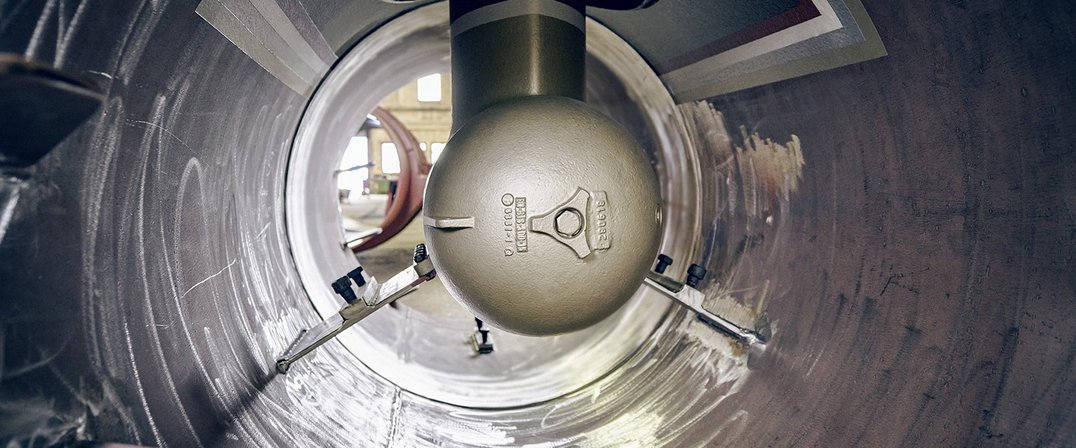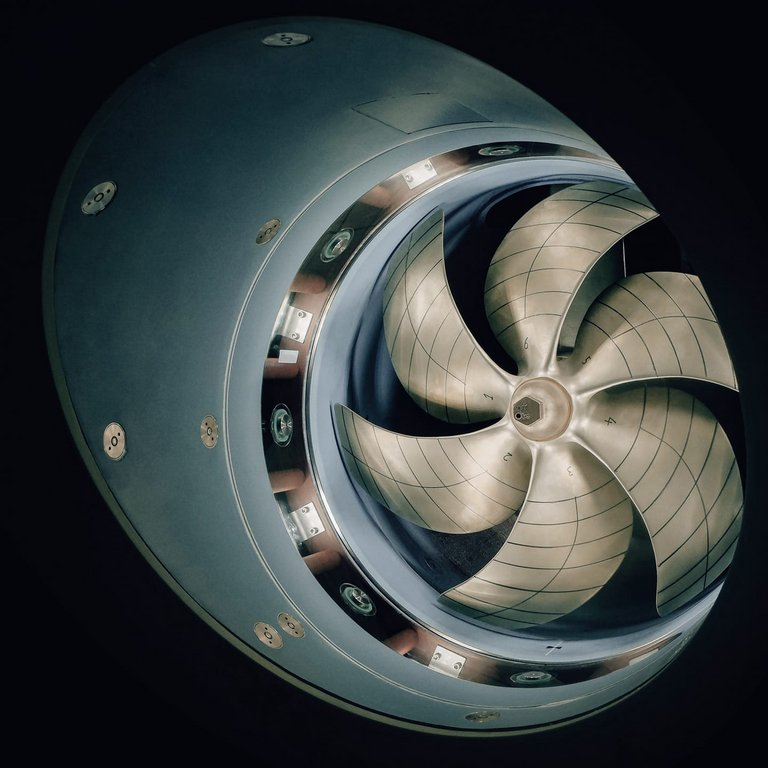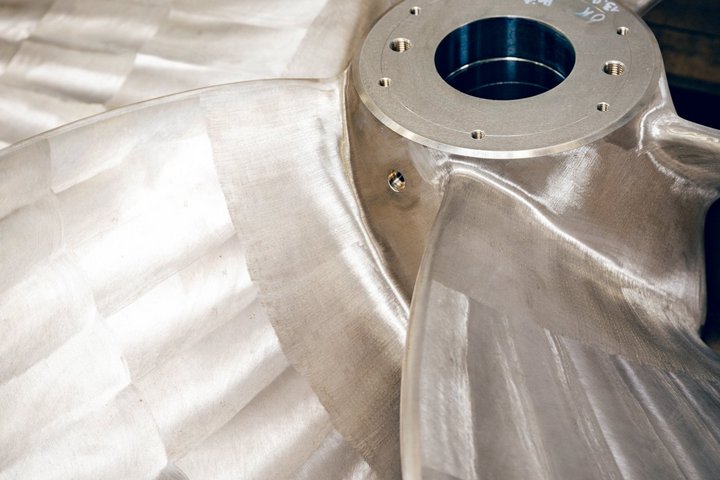
Passion is
what drives us.
From a simple locksmith workshop to an innovative mechanical engineering factory in Hamburg: as a fourth-generation manufacturer of marine drive and control systems, we combine traditional craftsmanship with modern engineering. Today, as the market leader in the field of active noise reduction, we are going full steam ahead.

What does drive really mean? It means energy, speed, intensity and endurance, and it is precisely these qualities that we put into our work every day. We are driven by passion – this is the drive with which we face new challenges every day and which we master together as a team.
As experts in ship manoeuvring technology, we specialise in low-noise transverse thrusters and rudder propellers. We do not only offer advice and manage the design and construction of the systems, but also offer continuous maintenance and servicing through our Jastram field service.
We are by your side throughout the entire process, providing support from the initial design phase to your finished product, and beyond this, throughout its entire service life. In addition to experience, research is also very important for us. Thanks to our many years of expertise in systems engineering and the latest research results, we support operators, designers and shipyards in the construction of quiet, efficient and, above all, sustainable ship propulsion. On the subject of quiet, when it comes to noise reduction, we are the market leader and have extensive knowledge of noise transmission and possible ways to reduce noise. In this way, after assessing the acoustic conditions, we can work with you to develop a strategy that focuses on all aspects of noise reduction. We always listen carefully to what our customer needs.
Production
Tradition meets innovation.
Our production is more than just a workplace. It is a place of inspiration, a driver of progress and innovation, a place where expertise and creativity come together. Our tradition remains at the heart of everything we do while also striving to achieve the highest quality standards. We focus on craftsmanship and precision. Each and every employee plays their part in our success. Everybody thinks critically and brings their knowledge, experience and new ideas to the table. The actively cultivated, close cooperation between development and design, on the one hand, and production and service, on the other, is what makes us so unique.


Research
Research and development are in our DNA.
DNA is the basis for the origin and development of every living being. Technical systems come from ideas, and from the knowledge of the relationships involved. Knowledge, inspiration, doubt and curiosity are the DNA of our product development. That is why Jastram has been involved in research projects for many years. The latest research project LeiQiT is part of the LeiQaS collaborative project which is funded by the Federal Government.
In this collaborative project, the processes already established at Jastram for noise reduction in transverse thrusters are being optimised, refined and extended. With a broad network of research partners, new and innovative approaches for the reduction of structure-borne noise, airborne noise and waterborne noise are being examined.
Methods for improving efficiency and reducing noise are cost-effective, can involve a combination of specific systems and processes. They can be adapted to specific customer requirements. Together with the expertise and competence in the development of system controls, Jastram offers a comprehensive portfolio that helps to make the construction and operation of ships more environmentally friendly, quieter and safer.

Jastram gets experienced project partners on board.
In cooperation with our partners, we research and develop methods for measuring and optimising transverse thrusters on a 1:1 scale.
As part of the querEVA collaborative research project (FKZ 03SX441, running from 2017 to 2020) funded by BMWi, an experimental setup was developed for measurements on a transverse thruster on a 1:1 scale in the deep-water channel at the Technical University of Berlin. As a manufacturer of tailored solutions in manoeuvring and drive technology, Jastram GmbH & Co. KG brought some experienced project partners on board. We are researching with Promarin Propeller- und Marinetechnik GmbH, that specialise in manufacturing propellers with innovative approaches for cavitation and reduced vibration, and the Dynamics of Maritime Systems department at the Technical University of Berlin, that specialise in manoeuvring and numerical flow simulation.
The querEVA project aims to improve the methodology for the design of transverse thrusters, taking into account installation conditions and driving conditions. The development work is based, on the one hand, on full-scale measurements and, on the other hand, on numerical full-scale flow simulations.

The drive for urban mobility.
Together with Kiel University of Applied Sciences, Jastram researched the factors influencing the selection of an optimal drive system for watercraft in extended urban spaces.
Which factors influence shipping design and drive systems today? How can we use our waterways optimally and sustainably? We considered these questions and examined them through market research within a dissertation project. We have discovered that the waterways in our cities often represent a potential area for the improvement and decarbonisation of public transport that has not yet been exploited.
Based on these findings, we designed the drive system for a passenger ship for use in a major German city together with Kiel University of Applied Sciences and optimised route selection and planning by means of simulations.
Excerpt from the motivation for the dissertation:
Traffic is increasing rapidly in cities, causing congestion, delays and pollution. We therefore need to rethink things and find new ways to ease this burden. One solution could be to move traffic away from the roads and onto waterways in the form of low-emission ships. Increasing numbers of cities are already making efforts to develop concepts to integrate passenger ships into their public transport network. Many larger cities are located on rivers and have excellent connections to waterways – perfect for reducing and decongesting road traffic within the city as well as commuting between the city and its surrounding areas.